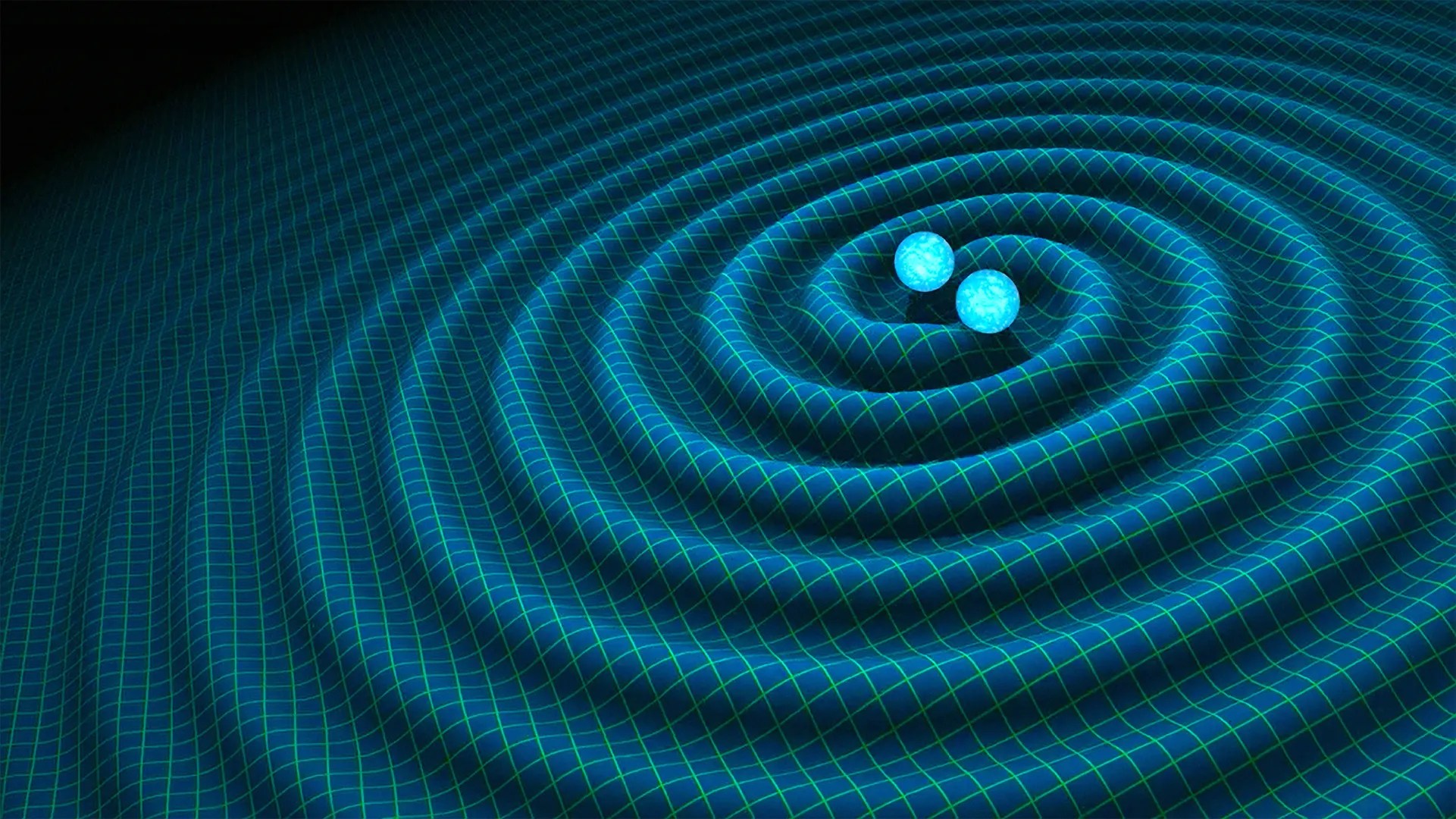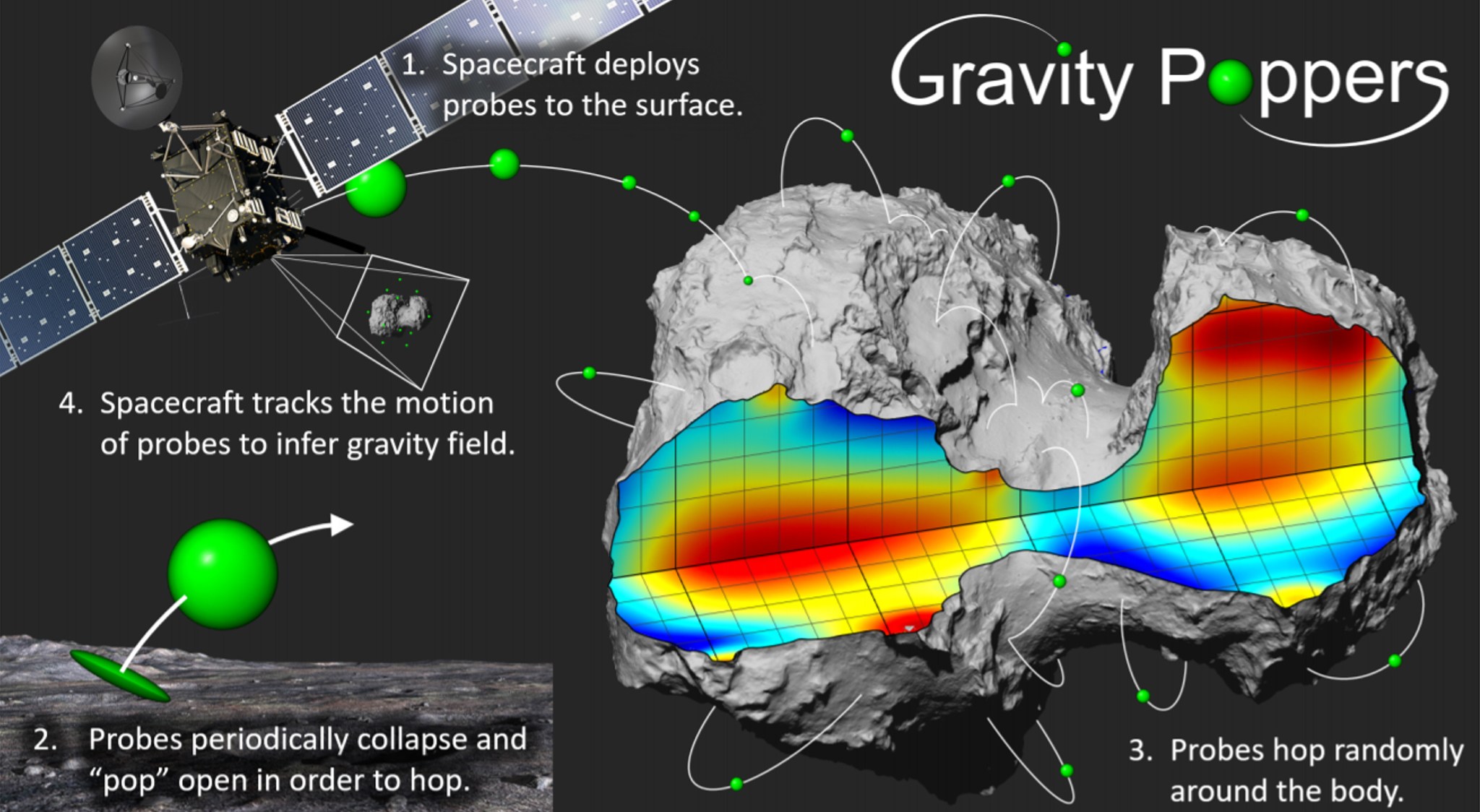Benjamin Hockman
NASA Jet Propulsion Laboratory
The goal of this effort is to develop a robust and affordable mission architecture that enables the gravimetric density reconstruction of small body interiors to unprecedented precision. Our architecture relies on the novel concept of “Gravity Poppers,” which are small, minimalistic probes that are deployed to the surface of a small body and periodically “pop” so as to perpetuate a random hopping motion around the body. By tracking a large swarm of poppers from orbit, a mother spacecraft can precisely estimate their trajectories and continuously refine a high-resolution map of the body’s gravity field, and thus, its internal mass distribution. In other words, the probes need not be equipped with any sensors or avionics of their own; rather, they themselves act as the sensors through their observed ballistic response to the body’s gravity field. This study aims to advance to TRL-3 the three core technologies that enable such a mission: (1) the mechanical design of hopping probes to be small, simple, robust, and “visible” to a distant spacecraft, (2) the tracking strategy for detecting and estimating the trajectories of a large number of ballistic probes, and (3) the algorithmic framework by which such measurements can be used to iteratively refine a gravity model of the body. Collectively, our study aims to demonstrate that the high-resolution gravity mapping of small body interiors is technically possible, economically feasible, and would enable a compelling set of science objectives aligned with NASA’s goals in planetary science, as well as broader interests in resource prospecting.































